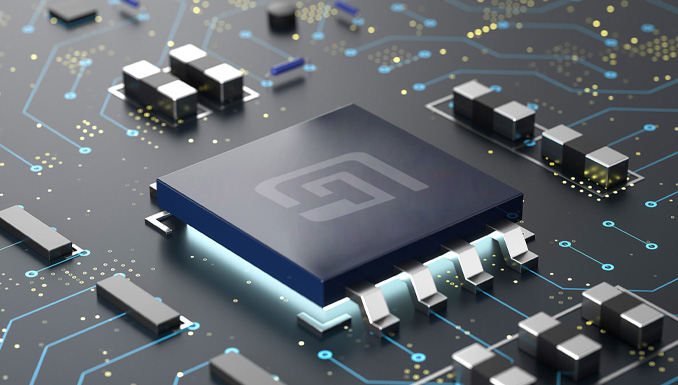NOR Flash Chip: Empowering Data Storage and Fast Access
In the world of digital data, efficient and reliable storage solutions play a pivotal role in countless devices and applications. Among the various memory technologies available, the NOR flash chip stands out as a versatile and widely used option. With its unique characteristics and capabilities, the NOR flash chip has become a cornerstone of modern data storage systems.

The NOR flash chip is a non-volatile memory device that stores data even when power is removed. Unlike volatile memory types such as RAM, which lose data when power is turned off, NOR flash provides persistent storage, making it ideal for applications that require long-term data retention.
One of the key advantages of the NOR flash chip is its ability to perform random access, allowing for fast and direct retrieval of data. This makes it suitable for applications that require quick and frequent access to stored information, such as microcontrollers, embedded systems, and boot code storage in computer systems. The NOR flash chip's architecture enables the direct execution of code from the chip itself, eliminating the need for data transfer to RAM before execution. This characteristic results in reduced latency and enhanced system performance.
Moreover, the NOR flash chip offers excellent read performance, enabling fast and efficient retrieval of stored data. Its parallel access structure allows for simultaneous access to multiple memory locations, reducing access time and improving overall system responsiveness. This attribute is particularly valuable in real-time applications and systems that require rapid data access, such as automotive electronics, gaming consoles, and communication devices.
Another notable feature of the NOR flash chip is its robustness and reliability. It is designed to withstand frequent program and erase cycles, making it highly durable. This endurance ensures that data remains intact even after numerous read, write, and erase operations, making it suitable for applications with high write endurance requirements, such as firmware storage and system boot-up code.
Furthermore, the NOR flash chip's architecture facilitates in-system programming and updates, providing flexibility for device manufacturers and end-users. It allows for the direct modification of data and code in the field, eliminating the need for costly and time-consuming replacement of memory components. This feature is particularly beneficial in applications where firmware updates or system upgrades are required, such as network routers, set-top boxes, and IoT devices.
The NOR flash chip's compatibility with various interfaces, such as SPI (Serial Peripheral Interface) and parallel interfaces, adds to its versatility and ease of integration into different systems and devices. It can be seamlessly integrated into a wide range of applications, including consumer electronics, automotive systems, industrial control, and medical devices.
As technology continues to advance, the NOR flash chip evolves alongside it, offering higher densities, improved performance, and enhanced reliability. Manufacturers are continuously pushing the boundaries to develop NOR flash chips with larger capacities, faster access speeds, and lower power consumption, meeting the ever-increasing demands of data-intensive applications.
In conclusion, the NOR flash chip is a fundamental component in modern data storage systems, providing persistent and fast-access storage capabilities. With its ability to perform random access, excellent read performance, durability, and in-system programmability, the NOR flash chip empowers devices and applications across various industries. As technology progresses, the NOR flash chip remains a reliable and versatile memory solution, enabling efficient data storage, quick access, and seamless integration into a wide range of devices and systems.
-
How to Auto Run Flash in Chrome: A Guide to Managing Flash Content
2024-12月-24
-
How to Turn Off Auto Flash
2024-12月-23
-
What is the Difference Between NOR Flash and NAND Flash?
2024-12月-16
























